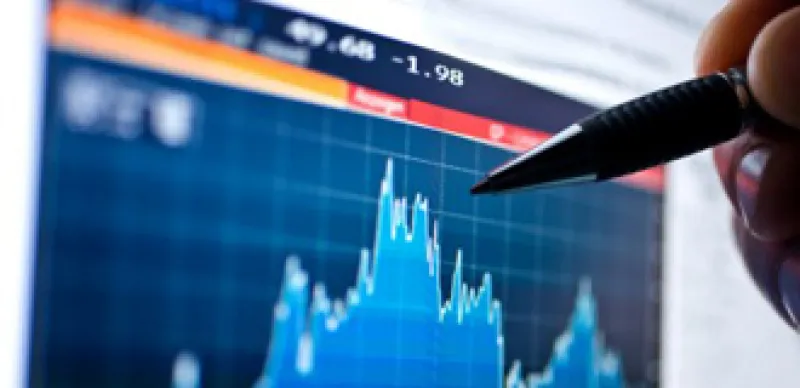
Many analysts believe that deleveraging in the U.S. and elsewhere will constrain future economic growth. In fact, earlier banking crises have been followed by strong economic pickups even as credit continued to contract. Those who worry about the amount of debt outstanding are ignoring a much more important factor: Namely, it is changes in the flow of new credit that affect economic growth.
U.S. private sector nonfinancial debt grew by about two thirds of gross domestic product in the decade before the credit crisis erupted in 2007. Typically, credit bubbles are followed by a reduction in debt proportionate to the preceding excess growth. If this holds true, then the U.S. still has a mountain of loans to repay. A recent McKinsey & Co. report, observing that past deleveraging episodes have lasted six to seven years on average, contends that “this process will exert a significant drag on GDP growth.” Research outfit Independent Strategy argues that the U.S. “could easily fall back under the weight of debt still not paid down.”
Yet economist Guillermo Calvo of Columbia University points out that many previous credit crunches have been followed by recoveries in which credit continued to contract. “Although a credit crunch appears to be central for explaining the output collapse,” write Calvo and his co-authors, “recovery can take place without credit.”* They call this apparently paradoxical state of affairs the “phoenix miracle.”
Deutsche Bank economist Michael Biggs (together with co-authors Thomas Mayer and Andreas Pick) denies that any miracle is involved. It’s conventional to look at the amount of credit outstanding and assume that any credit growth must provide a fillip to the economy, and that any contraction in credit will have a harmful effect. This is a mistake, says Biggs. What’s important is not the growth or contraction in the amount of outstanding debt, but rather the change in new credit issued. This point is universally accepted by economists when it comes to calculating the impact of inventories or government spending.
Here’s how it goes. Imagine an economy in year one where income is 100 and credit growth is 10. Let’s assume that this credit growth finances spending, which comes in at 110. Let’s say in year two that income is unchanged and credit growth is still positive but has fallen to 5. Then spending will actually shrink even though credit is still growing. This is what happened in 2008, according to Biggs, when new borrowing fell to 4 percent of GDP from 15 percent the previous year. This abrupt slowdown provided the most negative credit shock for the U.S. economy in 60 years, he says.
At the time, most commentators failed to anticipate the severity of the shock because credit was still growing. Their mistake was to confuse a stock, or amount of credit outstanding, with a flow, the change in the amount of credit issued. It’s the change in the flow of credit, or what Biggs calls the “credit impulse,” that affects economic growth.
This analysis provides insight into the mysterious phenomenon of the creditless recovery. Just as an economy may contract suddenly as credit growth slows, so it may grow strongly even as the stock of credit continues to contract. To see how this works, let’s return to our previous example. Let’s assume in year three that income is 100 and deleveraging leads to a credit contraction of 10. Then spending will be 90. In year four deleveraging continues, but credit declines by only 5. If income is unchanged, then spending can now rise to 95, or more than 5 percent.
As Biggs explains: “If households are deleveraging, then a slowdown in the pace of deleveraging will be sufficient to boost demand growth. A credit-led rebound in domestic demand growth can occur even while credit growth is negative and debt levels fall.”
There is evidence of positive credit impulses during earlier deleveraging episodes. After 1932 the U.S. economy recovered strongly despite a continuous decline in the stock of outstanding credit, weak monetary growth, rising savings and lackluster investment. A similar pattern followed the Scandinavian banking crisis of the early 1990s. In 1994, Swedish private sector credit contracted by 4 percent after having fallen by nearly 20 percent the previous year. This slowdown in the rate of deleveraging was accompanied by rapid economic growth even as the boost provided by the government’s deficit waned. And the U.S. economy rebounded after the savings and loan crisis despite the apparent headwinds of weak monetary and credit growth. In each of these cases, the rebound in growth coincided with a sharp rebound in the flow of credit, even though the stock of credit continued to fall.
The credit impulse hypothesis can even explain the miserable performance of Japan during the 1990s. The main problem was that the Japanese authorities prevented the necessary adjustment after the bubble economy burst. Banks hid their bad loans, and credit growth slowed only gradually. The pace of deleveraging was continuous and acted as a persistent drag on growth. Biggs observes that positive credit impulses during earlier deleveraging episodes tended to occur only after the banking system was stabilized. But in Japan that didn’t happen for more than a decade after the stock market turned.
The situation faced by the U.S. today is rather different. The Great Recession has been accompanied by a simultaneous credit crunch, rapidly falling house prices, a sharp contraction of new lending and the speedy bailout of the banking system. Over the past two years of financial turbulence, there has been a negative credit impulse equivalent to about 18 percent of GDP, according to Biggs. But as the financial system stabilizes, the pace of deleveraging will likely slow. This should provide the economy with a mildly positive credit impulse.
The credit flow analysis suggests a rather different outlook for China. Last year the Chinese economy proved remarkably robust, but growth was fueled by some 9 trillion yuan ($1.3 trillion) of new bank loans. This lending financed a massive expansion in investment. For the credit impulse to remain positive this year, Biggs estimates that Chinese bank lending would have to expand by about 700 billion yuan a month, or roughly twice the pace of the second half of 2009.
That’s unlikely to happen as Beijing fears both inflation and the appearance of local property bubbles. Monetary and credit policies are already being tightened. Having enjoyed what was probably the greatest credit impulse in history, the rampant Chinese economy may be facing a slowdown sooner than many expect.
*“Phoenix Miracles in Emerging Markets: Recovery Without Credit from Systemic Financial Crises,” Guillermo Calvo et al., NBER, 2006.
Edward Chancellor is the author of Devil Take the Hindmost and a senior member of GMO’s asset allocation team.






